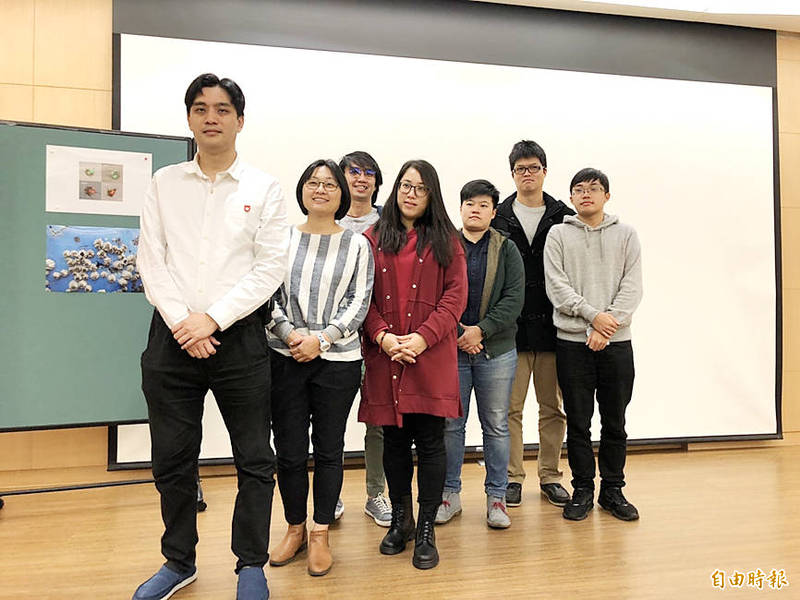《TAIPEI TIMES》 Researchers say plastic issue may be generational

Academia Sinica researcher Benny Chan, left, poses for a photograph with other researchers in Taipei yesterday. Photo: Yang Yuan-ting, Taipei Times
By Yang Yuan-ting and Jake Chung / Staff reporter, with staff writer
Exposure to microplastics might drastically reduce the survivability of marine organisms through harm done to subsequent generations, Taipei-based researchers said yesterday.
Academia Sinica researcher Benny Chan (陳國勤), a Hong Konger, and Yu Sing-pei (余倖霈), a master’s student at National Taiwan University’s Institute of Ecology and Evolutionary Biology, said in a paper published in this month’s issue of the journal Environmental Pollution that they studied the within-generation, latent and intergenerational effects of polystyrene microplastics on marine animals, in particular, Amphibalanus amphitrite.
The paper, titled “Intergenerational microplastics impact the intertidal barnacle Amphibalanus amphitrite during the planktonic larval and benthic adult stages,” said that barnacles exposed to microplastics had prominent intergenerational effects, although the researchers found no within-generation effects.
“We exposed parents to microplastics during different developmental stages and examined the life history traits of their offspring,” the authors wrote in the abstract.
Regardless of what concentration of microplastics a parent generation was exposed to, the mortality among their offspring rose, it said.
The results suggest that if marine organisms are exposed to microplastics during sensitive early stages of their life cycle, it could have a profound effect on their progeny, it said.
“Adverse intergenerational effects of microplastics might drastically reduce larval recruitment and threaten long-term zooplankton sustainability,” the researchers wrote.
Separately, Chan said that microplastics generated from laundering artificial fibers comprise more than 35 percent of microplastics flushed to sea.
Every 6kg load of clothing made from artificial fibers that is washed generates more than 600,000 pieces of microplastic, Chan said.
An additional 28 percent stems from tire wear and 24 percent is contributed by plastic waste floating at sea, he said.
Chan urged the public to take note of the material of their clothing and urged people to wear clothing made from 100 percent natural cotton, linen or silk.
He also called on people to reduce use of one-time plastic utensils and other products, and to recycle to prevent more microplastics from entering the ocean.
新聞來源:TAIPEI TIMES


















